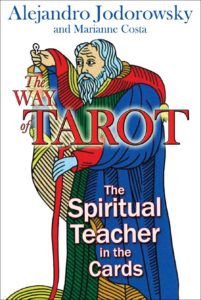 I heard lot of good things about Alejandro Jodorowsky’s book on Tarot, then I read a couple of positive comments on different Tarot forums and specific social media groups. Finally, I stumbled across a quite interesting book synopsis which determined to read the book.
I heard lot of good things about Alejandro Jodorowsky’s book on Tarot, then I read a couple of positive comments on different Tarot forums and specific social media groups. Finally, I stumbled across a quite interesting book synopsis which determined to read the book.
I have to admit, I had quite high expectations, and somewhat I was pretty disappointed. I will explain.
For the beginning, let’s see who Alejandro Jodorowsky is?
Born to Jewish-Ukrainian and Polish parents in Chile, Alejandro Jodorowsky Prullansky (17 February 1929) is a Chilean-French film and theatre director, screenwriter, playwright, actor, author, poet, producer, composer, musician, comics writer, and spiritual guru, currently living in Paris (France).
He is 1970’ acid western ‘El Topo’ rose him to fame. Garnering high praise from John Lennon provided him with $1 million to finance his next film,
‘The Holy Mountain’ (1973), a surrealist exploration of western esotericism.
Jodorowsky produced three more films, the family film ‘Tusk’ (1980), the surrealist horror ‘Santa Sangre’ (1989), and ‘The Rainbow Thief’ (1990).
Simultaneously, he has written a series of science fiction comic books, most notably ‘The Incal’ (1980–1989), ‘The Technopriests’ and ‘Metabarons’.
He has also written books and regularly lectures on his own spiritual system, which he calls “psychomagic” and “psychoshamanism” and which borrows from his interests in alchemy, the tarot, Zen Buddhism and shamanism.
Jodorowsky spent almost a decade reconstructing the original form of the Tarot de Marseille. From this work, he moved into more therapeutic work in three areas: psychomagic, psychogenealogy and initiatic massage. Psychomagic aims to heal psychological wounds suffered in life.
Jodorowsky has several books on his therapeutic methods, including Psicomagia: La trampa sagrada (Psychomagic: The Sacred Trap) and his autobiography, La danza de la realidad (The Dance of Reality), which he was filming as a feature-length film in March 2012. To date, he has published more than 23 novels and philosophical treatises, along with dozens of articles and interviews. His books are widely read in Spanish and French but are for the most part unknown to English-speaking audiences.
Jodorowsky is also a weekly contributor of “good news” to the nightly “author news report” of his friend, Fernando Sánchez-Dragó in Telemadrid.
He also released a 12″ vinyl with the Original Soundtrack of Zarathustra (Discos Tizoc, Mexico, 1970).
In 2005, Jodorowsky officiated at the wedding of Marilyn Manson and Dita Von Teese.
Fans included musicians Peter Gabriel, Cedric Bixler-Zavala and Omar Rodríguez-López of The Mars Volta, Brann Dailor of Mastodon, Luke Steele and Nick Littlemore (of the pop-duo Empire of the Sun), and Limp Bizkit guitarist, Wes Borland.
‘The Way of Tarot, The Spiritual Teacher in the Cards’, is co-authored by Marianne Costa. She has worked with Jodorowsky since 1997, co-teaching workshops on Tarot and family tree-therapy.
Marianne Costa, born 1966, holds an M.A. in comparative literature and studied at Ecole Normale Supérieure. She has published several books translated in various languages, among which: ‘No Woman’s Land’ (novel, Grasset 2004), ‘The Way of Tarot’ (with Jodorowsky, Inner Traditions 2005, German edition ‘Windpferd’ 2008) and ‘Metagenealogy’ (France 2011, USA 2014, a study of family as both a treasure and a trap, also with Jodorowsky). Her polyfacetic career includes working pro bono as a French literature assistant during the war in Sarajevo, being a professional actress and singer, writing and translating poetry, novels and essays, and teaching groups worldwide in Tarot, Metagenalogy what she calls ‘healing fictions’, an original technique that combines and surpasses therapy, self-development and artistic expression. She lives in Paris.
Now let’s analyse the book.
Jodorowsky spent almost a decade reconstructing the original form of the Tarot de Marseille. This is a very noble effort and worth all our consideration and respect. However, and there is a big BUT, considering the Tarot de Marseille the key to decrypt the hidden symbolism of the Tarot deck is a mistake just like applying Kabbalistic keys to English.
The Tarot has its origins in Italy, surfaced in the 14th, respectively 15th century Italy and introduced into southern France only after the French conquered Milan and the Piedmont in 1499.
The surfacing of the Tarot decks in Italy is still a mystery and subject of debates.
Up to date, the oldest complete surviving Tarot deck is The Sola-Busca Tarot deck (estimated date 1491), and it is also the only ancient deck in which all 56 “Minor” cards are illustrated with characters, instead of the traditional symbols.
The roots of the Tarot de Marseille can be traced back to late 1600, beginning of 1700. Even so, very few Marseilles pattern cards from the 17th century have survived, chiefly among them are the Tarot of Jean Noblet (1650, the oldest known tarot of the “Marseille” tradition). Most survived versions of the Marseilles decks are versions from the 18th century.
I think it is impossible to decrypt the symbolism of the Tarot cards from any of the known and survived Tarot decks, because the symbolism in all of them was altered by the commissioned artists who executed them, respectively by the will of the commissioners. For instance, in the Sola Busca deck, the 22 Triumphs are depicting heroes of Greek and Roman history and, in two cases, of biblical story: Nenbroto (Nimrod) and Nabuchodenasor (Nebuchadnezzar).
The use of obviously Christian traditional images in the Marseilles decks – such as the Pope and the Devil – also make impossible to decrypt the original – and lost – symbolism of the Tarot cards. In my opinion, religion, Christianity, nor Judaism, respectively the Kabbalah, has nothing to do with the Tarot. Not in the way most of the scholars and authors understood, interpreted and misinterpreted the Kabbalah to fit their own interests and visions. From Eliphas Levi to Aleister Crowley, each author had he is own understanding and interpretation of the Kabbalah, respectively how the 22 letters of the Hebrew alphabet are connected to the Tarot deck and especially to the 22 cards of the Major Arcane.
I think there is a key which unlocks all these esoteric sciences – not arts -, and that key is the system which constitutes the theoretical and structural foundation of all of them, including here both Tarot and Alchemy, branches which incorporate Astrology and Numerology.
Jodorowsky, absolutely correctly, noticed that the “majority of authors of Tarot books are content to describe and analyse the cards one by one without imagining the entire deck as a whole”. Also, he highlighted the importance of the “order of the entire Tarot” (deck). Exactly these observations were the starting point of my own more than 25 years long research and study of the Tarot. My conclusion was that it is a commonly shared unitary system at the foundation of Tarot, Alchemy, Kabbalah, Astrology and Numerology and knowing and understanding this system is the key to knowing and understanding all of them together and apart.
I was hoping that Jodorowsky had some similar findings, made some similar connections. Unfortunately, he has not.
Jodorowsky main goal was to understand the symbolism of the card and find the “links that connect all seventy-eight cards” and “form a mandala from all together”.
The only possible connection is a commonly shared theoretical and structural system, not only between all the 78 cards but also between Tarot-Astrology-Numerology-Kabbalah-Alchemy. The decrypting of the symbolism it is possible only after we discover and understand the system which is the foundation of that symbolism.
Jodorowsky, regrettably, failed to identify and reveal any system. Although, he developed some kind of pattern which, in his vision, may be applied both to the Numerals (small, numbered cards) and the cards of the Major Arcana.
I was very curious about his conclusions regarding the Numerological aspects.
Jodorowsky noticed the quite misogynist nature of Numerology “where the odd numbers, 1, 3, 5, 7, and 9, were exalted as male and associated with light, heat, and the positive”, while “2, 4, 6, 8, and 10, labeled as “feminine,” were synonymous with obscurity, cold, and negativity”. I cannot agree more that this division of the numbers is erroneous, respectively “a woman can be active and a man receptive”. However, then Jodorowsky states that the “ten numbers could not be defined as male or female but were androgynous at all times”. With this affirmation, I disagree firmly. The nature of the numbers is active, passive and neuter (double or androgynous). In my opinion 1, 5, 7 and 10 are active (and against the traditional perceptions are feminine) numbers, 2, 4, 8 and 11 are passive and 3, 6, 9 and 12 are the neuter numbers.
Although Jodorowsky refuses to use the terms ‘feminine’ and ‘masculine’ and resume to use ‘odd’ and ‘even’ numbers, respectively refer to as ‘reception’ and ‘action’, practically it makes no difference.
The numerological pattern proposed by Jodorowsky is a process of development “of 1 to 10, which should be imagined as being in constant transformation, like the cycle of the seasons.” This pattern was developed based mainly on the symbols included in the card XXI, The World (or The Universe).
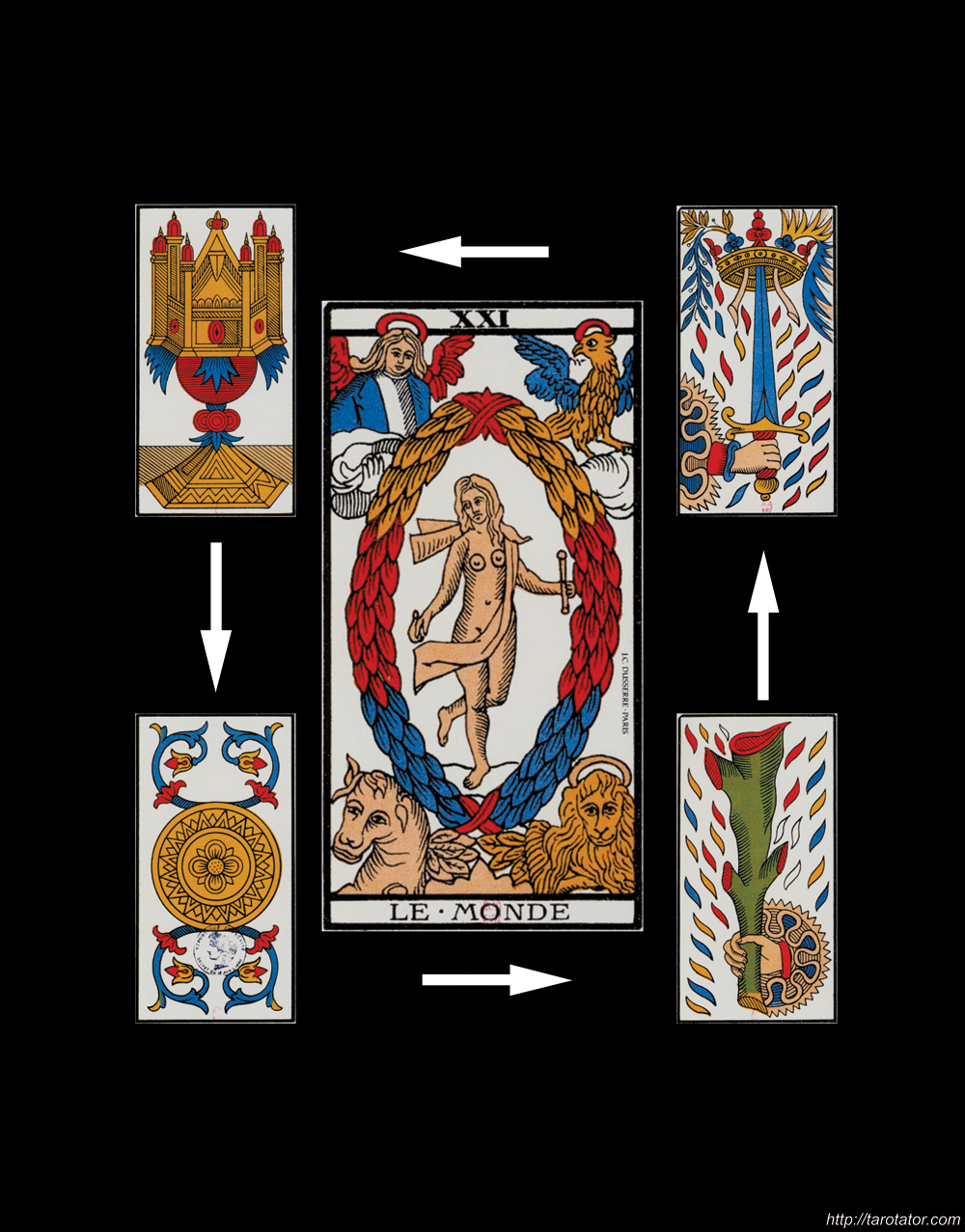
According to Jodorowsky, 2, 3, 4 and 5 represents the Earth square, respectively the ‘maternal role’ and 6, 7, 8 and 9 represents the Heaven square, respectively the ‘paternal role’ (although he mentioned that “though in the matriarchies of antiquity it was Mother Sky and Father Earth”). 1 is considered to be the ‘seed’, the ‘potential’ of the beginning while 10 represent the achievement.
Jodorowsky also connects the numbers of the Earth square to the material world, respectively the numbers of the Heaven square to the spiritual development.
In another division, 2, 4, 6 and 8 are considered to represent ‘reception’ while 3, 5, 7 and 9 represent ‘action’.
These 10 numbers represent 10 degrees of progress (evolution, development).
This is the key feature of understanding the practical interpretation of the use of the Tarot cards as a tool of self-development and healing.
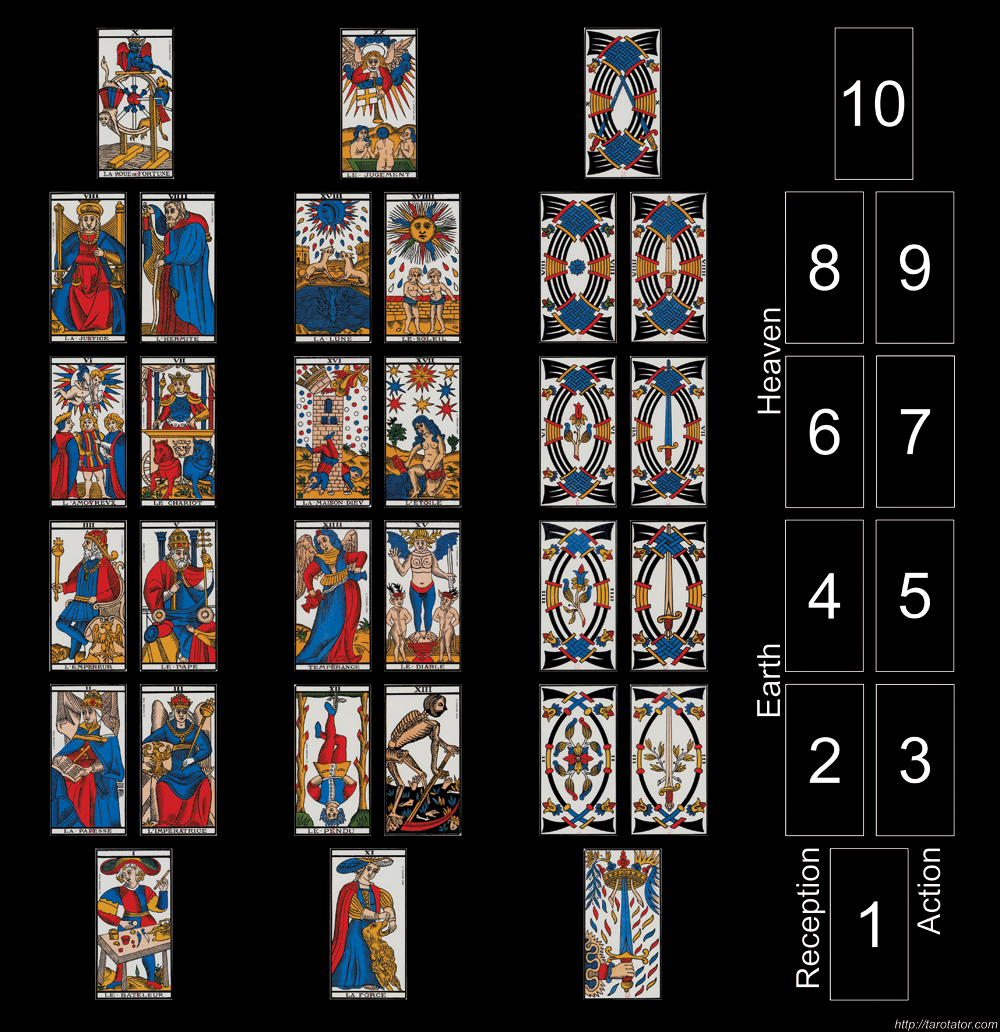
This pattern is very elegant and tempting. Although, I am not very convinced it is accurate too.
The Court Cards are integrated as a middle pillar between the two columns: the 2, 4, 6 and 8, respectively the 3, 5, 7 and 9.
The Pages are positioned between the 2’s and 3’s; the Queens are positioned between the 4’s and 5’s; the Kings between the 6’s and 7’s; and the Knights are positioned between the 8’s and the 9’s.
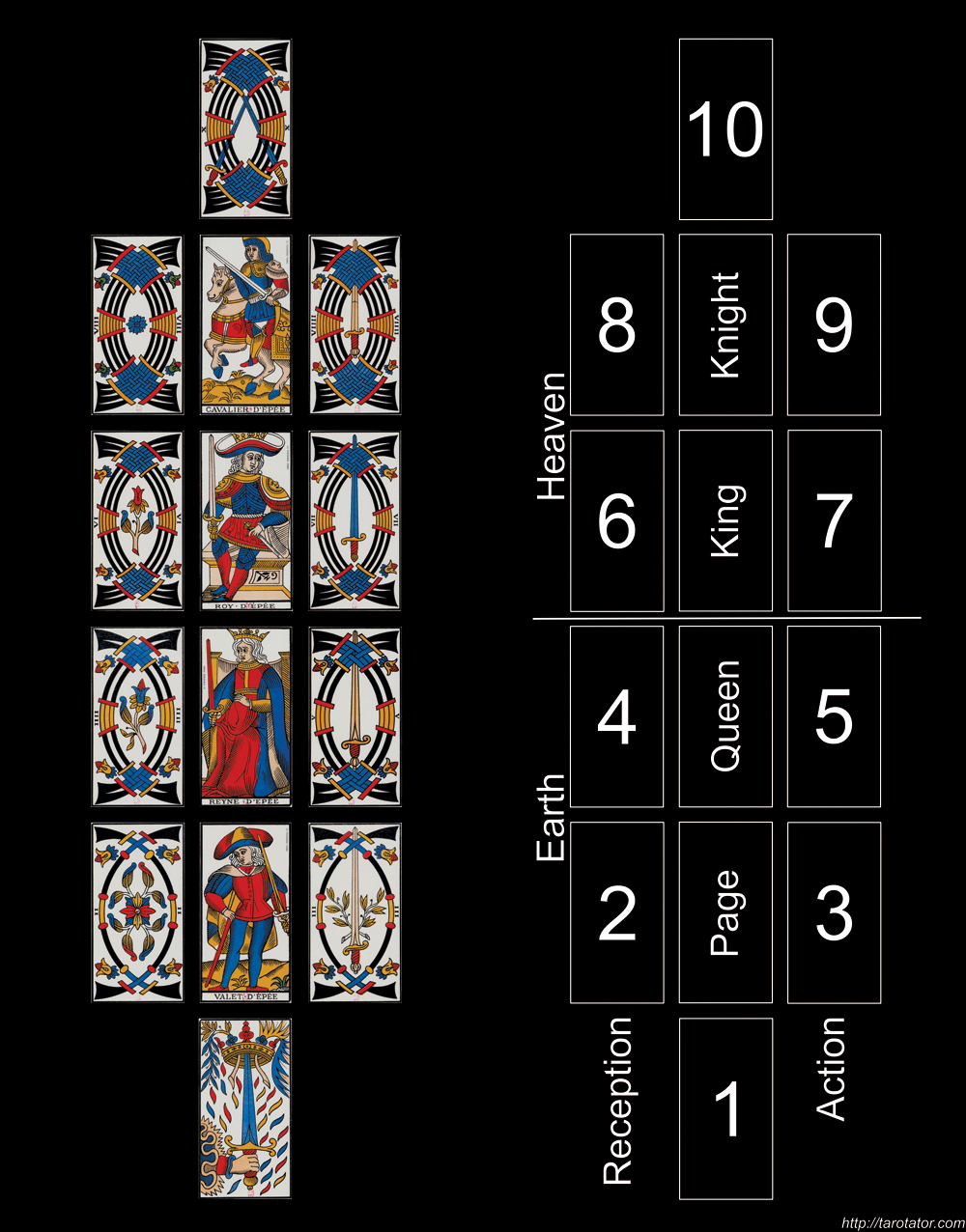
According to Jodorowsky the Pages expresses a doubt, hesitation and duality; The Queens represents the essence, respectively the ‘inside’ of each Suit; The Kings represents self-awareness and the desire of exploring beyond; and the Knights represents the transmission outside of the energies created by the work of the Page, Queen, and King.
The Major Arcane is organised in pairs between The Fool and The World.
In conformity with the traditional perception, Jodorowsky views the 22 cards of the Major Arcana as a ‘story’ which occur between the Fool (0) and The World (XXI). According to Jodorowsky, all the 22 cards are connected in so-called ‘duets’:
0 The Fool—XXI The World
I The Magician—XI Strength
II The High Priestess—XII The Hanged Man
III The Empress—XIII The Nameless Arcanum (The Death)
IIII The Emperor—XIIII Temperance
V The Pope—XV The Devil
VI The Lover—XVI The Tower
VII The Chariot—XVII The Star
VIII Justice—XVIII The Moon
VIIII The Hermit—XVIIII The Sun
X The Wheel of Fortune—XX Judgment
No matter how I look at these pairs, they do not make any sense for me.
Although, probably strictly accidentally, some are astrologically connected – as it is in the case of The Pope (Capricorn) and The Devil (Saturn); others make a nice opposition – as it is in the case of The Emperor (Aries) and Temperance (Libra).
The most representative couples of the Tarot according to Jodorowsky are:
The Fool—The World
The Magician—Strength
The High Priestess—The Pope
The Empress—The Emperor
The Chariot—The Star
Justice—The Hermit
The Moon—The Sun
These represent, symbolically, some of the most representative versions of the male-female relationship.
“The preeminent metaphysical couple” is composed by The Fool and The World. The Fool crosses through all the Arcana of the Tarot before reaching his ideal partner, The World. “This concept corresponds to Chinese philosophy, in which Yin and Yang are complementary.”
The other couples are connected based on the fact that they belong to the same numerological degrees.
Once again, although he criticised the male-female division of the Numerological system, Jodorowsky divide everything in ‘active’ and ‘receptive’, which is a fancy way to say ‘active’ and ‘passive’, so, basically is still the same male-female division, but under another name.
There is also a ‘gender’ relationship between the Suits as well. The Swords and Wands are considered active, while the Cups and Pentacles are considered receptive elements.
Jodorowsky says: “Today, when women are struggling mightily to obtain a balanced relationship with men after centuries of humiliation and slavery in a culture that is male-dominated, it is very moving to see the Tarot, probably from the year 1000, proclaiming the necessary complementary nature of the sexes.”
I agree that Patriarchy and Monotheism poisoned not only our way of life but our way of thinking and our perception of the universe. However, there is no reconciliation between two struggling forces without the existence of the third alternative – principle. Instead of labelling all the sexual energies androgynous, we should understand that there are three distinctive, equally active energies.
On the other hand, Jodorowsky opens the door to the group, respectively couple-therapy by offering in-depth analyses of the relationship between different cards and aspects. My only footnote regarding this issue would be that I think the identifying of the archetypes in some cases are erroneous.
Another key aspect is that Jodorowsky claims that ‘the four Suits of the Tarot are not the four elements of alchemy or other systems (Sword/Air, Cup/Water, Pentacles/Earth, and Wand/Fire).”
No offence, but Jodorowsky obviously has no minimal astrological knowledge, and without those, it is impossible to understand the Alchemical parallels.
In order to provide an efficient reading methodology, Jodorowsky tried to reinvent the wheel without knowing and understanding its primary structure and functions.
He is lack of astrological knowledge and references is disarming.
He stated that “the Major Arcana represent the archetypes of the path of Awareness and can be attributed to the element of ether (aether)”.
So, Jodorowsky proposes the system of the five classic elements in which the 22 cards of the Major Arcana represent the aether, while the four Suits are associated with earth, water, air and fire. The Pentacles are associated to Earth, respectively to the ‘Corporal Center’ and to needs; the Wands are associated to Fire, respectively to the ‘Sexual Center’ and to creativity and desires; the Swords are associated to Air, respectively to the ‘Intellectual Center’ and to the thoughts; and finally, the Cups are associated to Water, respectively to the ‘Emotional Center’ and to feelings.
Talking about ‘Centers”, Jodorowsky reminded me of Gurdjieff and his teaching regarding the ‘human machine’. Although circumstantially, Gurdjieff mentioned a possible fourth centre, the instinctive one which may coincide with Jodorowsky’s ‘Sexual Center”, he speaks exclusively about three centres and four bodies. This combination of 3 and 4 is the very foundation of the esoteric system. Moreover, to some extent, Jodorowsky was pretty close to identify it within his three columns and four levels pattern (when the Court Cards are included).
In the Oriental spiritual tradition, the element ether, called “akasha” in Sanskrit is the first of the five great elements (pancha mahabhutus). It comes first because it is the subtlest of the elements. Often referred to as “space,” it is the essence of emptiness. It is also the space the other elements to fill. The aether is considered ‘spiritual’ element, while the rest of the four elements are considered to be ‘physical’.
I will not discuss the concept, but I seriously doubt that this theory applies to the Tarot cards and especially that the 22 cards of the Major Arcane are representing the 5th element, the aether. On the other hand, Jodorowsky finds to draw some conclusions regarding spatiality from the layout of the Major Arcane.
I think the connection between the cards is more organic and have a commonly shared Astrological foundation. The Astrological and Numerological pattern is the key to understanding each Tarot card and all the 78 cards together.
Jodorowsky completely ignore these aspects, and as a consequence, his system is based exclusively on subjective impressions and interpretation of some – possibly altered – symbols.
Although Jodorowsky claims that he represents a departure from the classic approach to the Tarot and its interpretation, he proves to be quite conservative.
He speaks a lot about Christian and Jewish symbolism, and instead of a theoretical and structural foundation, he makes references to the Kabbalah and the Tree of Life. Which would be all right if it would be correctly interpreted, respectively based on the same Astrological and Numerological foundation. However, they are not. And although Jodorowsky offers some very interesting interpretations of the symbolism of the Tarot cards, examining and explaining every single detail to almost microscopic level, some of these are only unsustainable speculations.
Jodorowsky main concern was to create mandalas which are the key features of our spiritual healing and development.
Jodorowsky creates art using art – respectively the Tarot cards. This is a very admirable effort, but from strictly philosophical and practical perspective of the understanding and learning the Tarot, these are quite subjective and individual manifestations which may, or may not have an impact on others, may work, or may work not in the case of other individuals. This type of art is always subjective because, once again, it not relays on a strictly technical, cold and objective philosophical and structural foundation.
Another important subject of the book is the exploration and explanation of the colour scheme of the Tarot cards.
Jodorowsky once again uses some quite sexual terminology to explain his vision: “the combat (or dance) between light and darkness gives birth to colour.”
The colour is a very important aspect of decrypting the Tarot symbolism.
He uses his own ‘Eleven-Color Scale’ formed of black, white, flesh, green, red, blue, yellow and violet.
In my opinion, the colour-scheme of the Tarot cards are directly connected to Alchemy; respectively the combination resulted from the Three Primes and the four basic elements (respectively the four stages of transmutation also known as ‘The Great Work’). The sum of these is twelve.
Once again Jodorowsky stretches the facts to fit his vision and leads us on the path to confirm his own obsession with the number eleven.
Then Jodorowsky speaks about ‘Eleven Paths of Realization’ – based on the eleven pairs of the 22 cards of the Major Arcana.
If The Fool and The World are the Alpha and Omega of the Major Arcane, The Wheel of Fortune (X) and Strength (XI) forms the heart of it.
According to Jodorowsky, from the combination of each of these eleven pairs and their energies results making ‘a world’, respectively re-create Arcanum XXI.
However, this is quite an allegorical interpretation of the Trinity, respectively the idyllic depiction of the traditional family where from the union of a father and a mother the resulting third, the child, is the combination of the original two elements.
The idea of male and female acting together and evolving together, relaying and helping each other as a couple, two complementary elements (Yin and Yang), it is very noble. Or actually pretty alchemical.
If you will google ‘alchemy’, most of the pictures you will find depict a man and a woman, respectively a master and his/her disciple working together. It says that Adam and Eve were the first two alchemists. Alchemy is the Western Esoterism’s Tantra. It is a profoundly practical, sexual (emotional) and spiritual process. But if we will dig a little bit deeper, if we will pick beyond the immediate appearance, it was not only Adam and Eve, but there was also the Snake, an important participant of the whole process. Depicted or not, the third principle is always there, and it plays a determinant role.
Downsized to a man and woman relation, this three-dimensional space instantly loses one dimension. It is like losing the Holy Spirit from the Trinity.
Jodorowsky may have read some Gustav Jung considerations regarding the Alchemy, but it seems he did not study Alchemy. With all my consideration to the work of the Swiss psychiatrist and psychoanalyst, his perception and interpretation of Astrology and Alchemy are subjective and inaccurate. Relying exclusively on a sole and intermediate source without having at least the basic notions of Astrology and Alchemy, it is inadmissible. Jung has filtered, organised and systemized everything to fit his own vision. We all do that, we are all stretching the facts in our own favour to sustain our point of view, but at least we should have more than one source to keep at least some impression of objectivity and academical accuracy.
Jodorowsky is an artist, possibly a great one, he follows his intuition, and he relays on inspiration, but the Tarot is a science. As I repeatedly stated, can’t be everybody right. Although, this is a very charming, ‘hippie’ thought. However, 1+1 equals 2, and when each practitioner came up with her/his result, there is something definitively and profoundly wrong. So, I believe in structure, in the existence of a clear and simple, commonly shared system, and only based on this objective, stable system we can appeal to our subjective intuition and inspiration.
Still, ‘The Way of Tarot’ is very interesting reading. Every book is a magical world open to being discovered!
The Way of Tarot by Alejandro Jodorowsky – Amazon
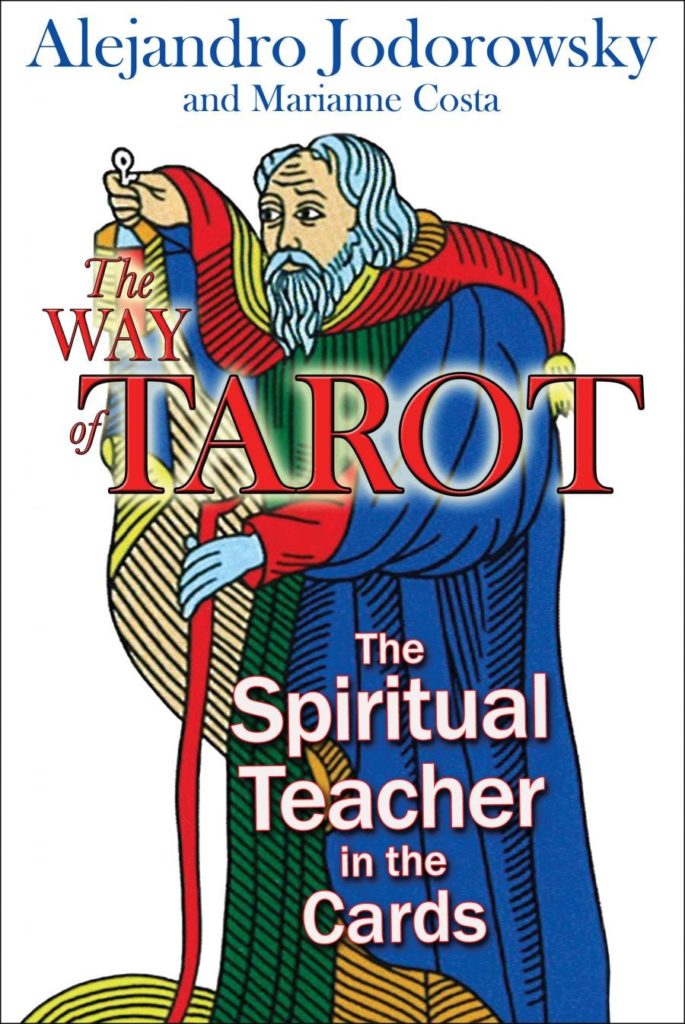

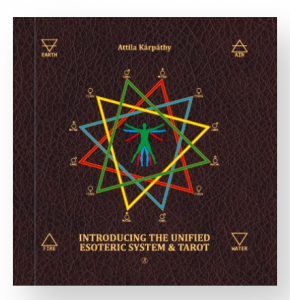
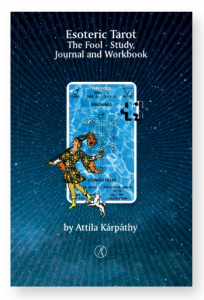
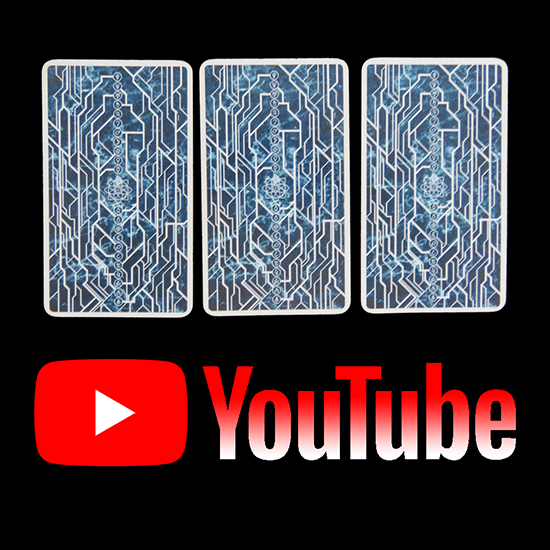
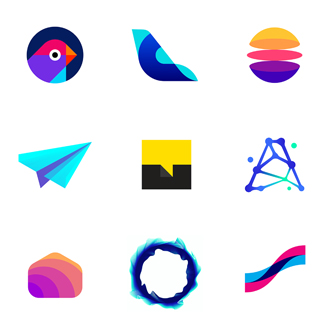
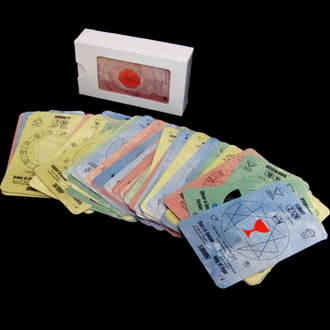
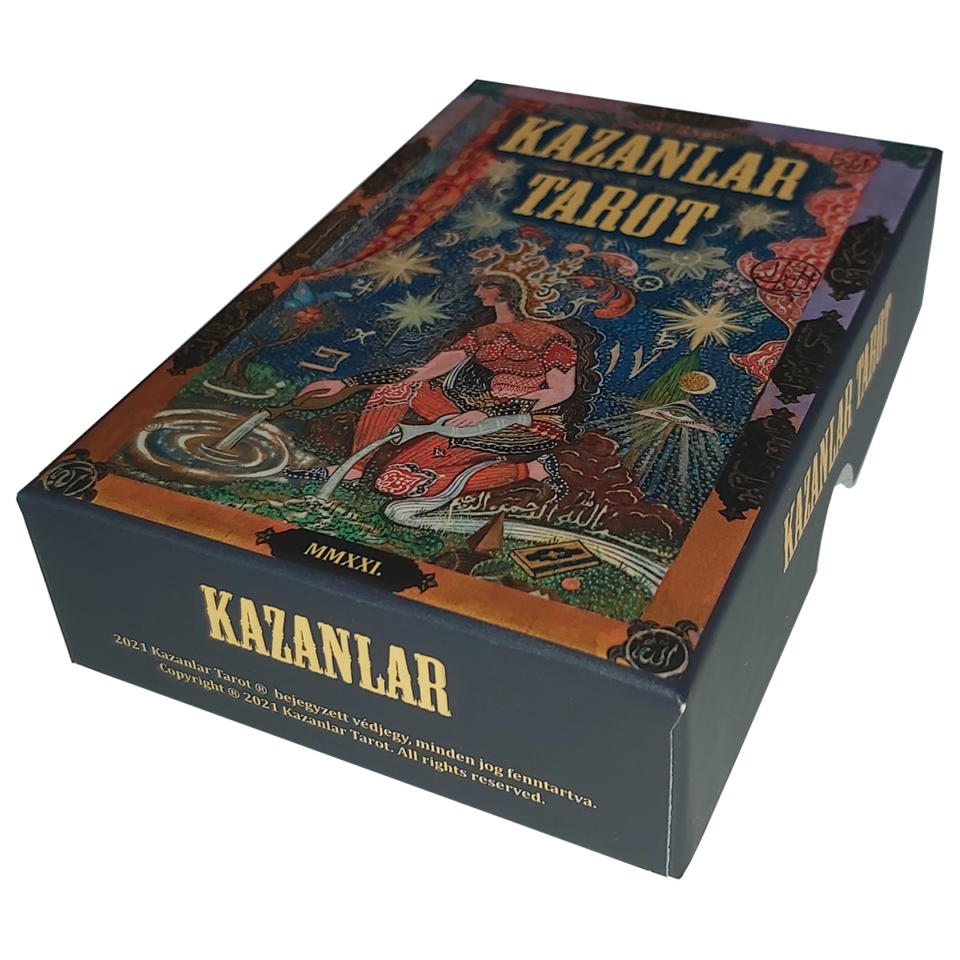
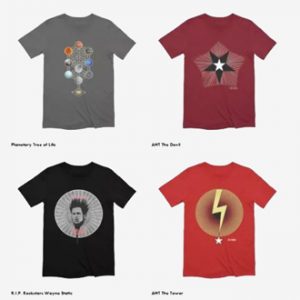
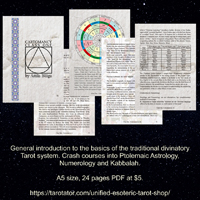
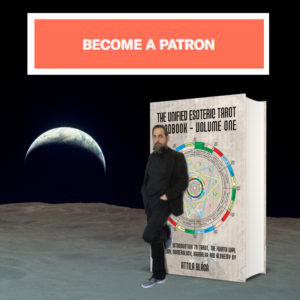
I assume that the terms he used such as “active” and “receptive” is derived from I Ching, translated by famous sinologist Richard Wilhelm, in which he interpreted “yang” as “active”, “yin” as “receptive”, is the same meaning as “masculine” and “feminine“. They intended the same to avoid “masculine – manly” “feminine – womanly” connection. I struggled a lot when translating “active-receptive” and found this out by accident. Such a twist.
Jodorowsky struggled to avoid any “sexist” interpretation. In my opinion, he, just as many others, failed because of no matter how we may label these energies, the only viable alternative is getting out of the dualistic models and work with triplicity: active, reactive (passive) and neuter (double or reconciling). Any dualistic model, including I Ching, is erroneous and misleading, is the result of religious doctrines (such good and evil) and not the esoteric principles.